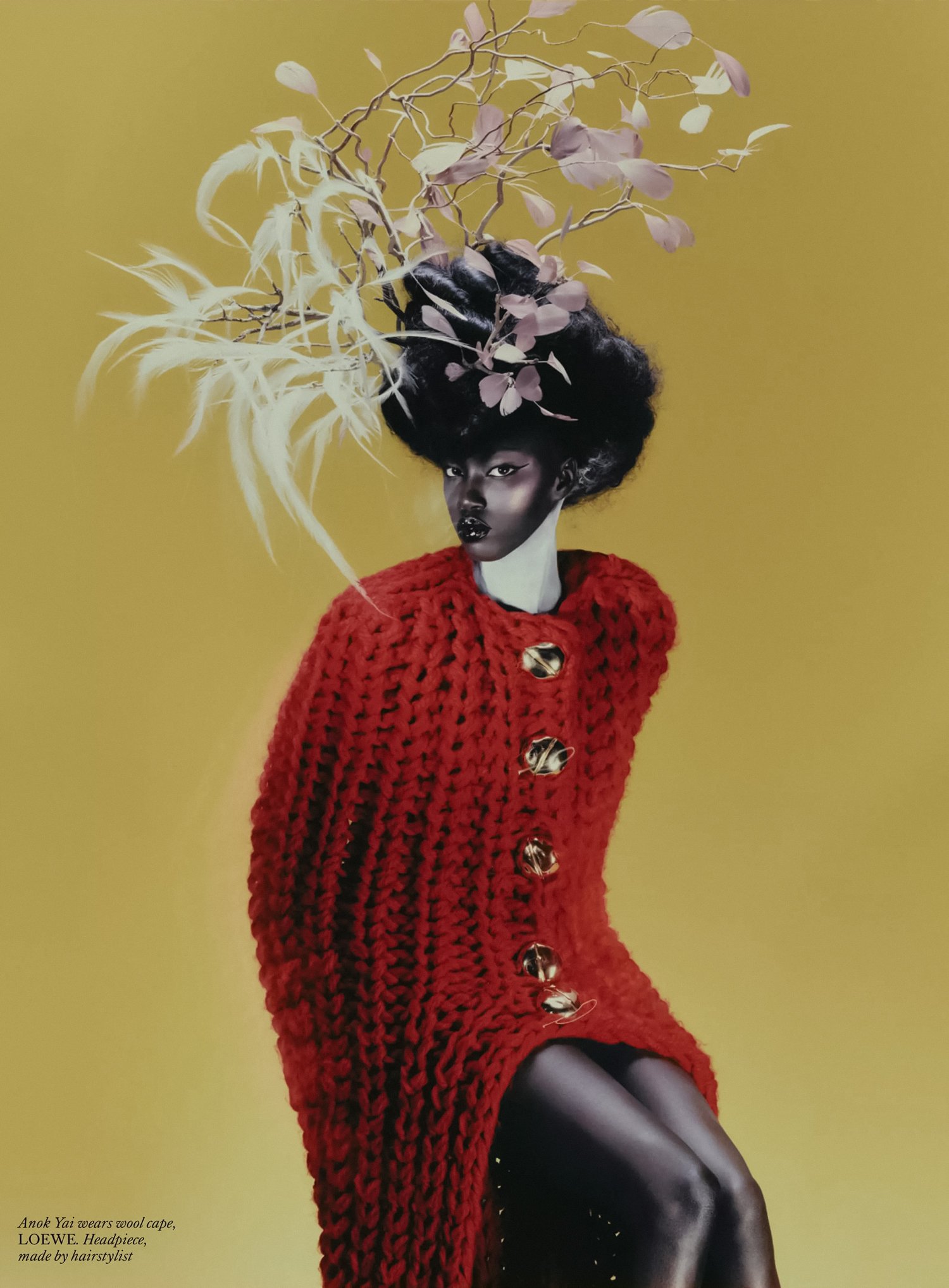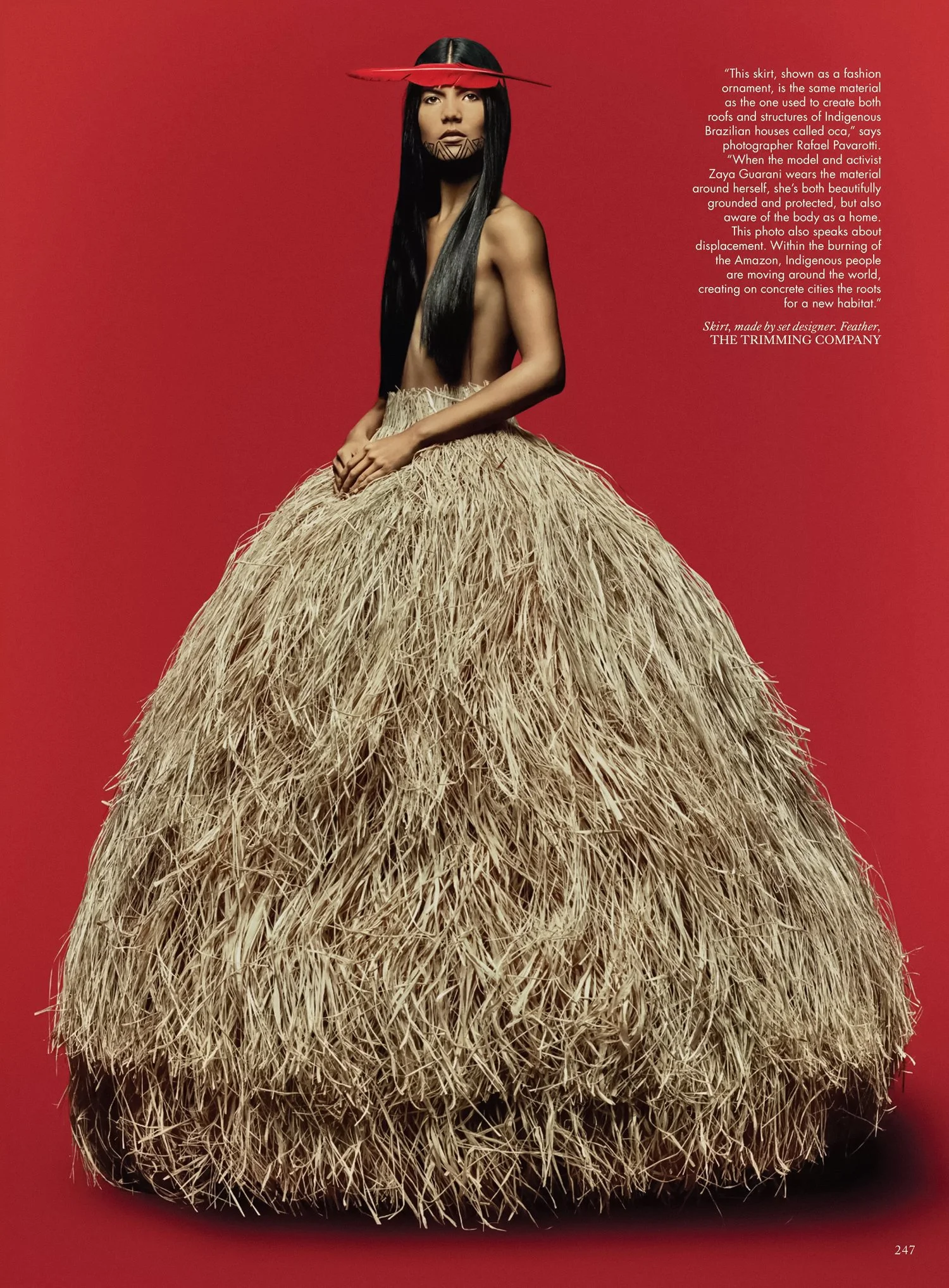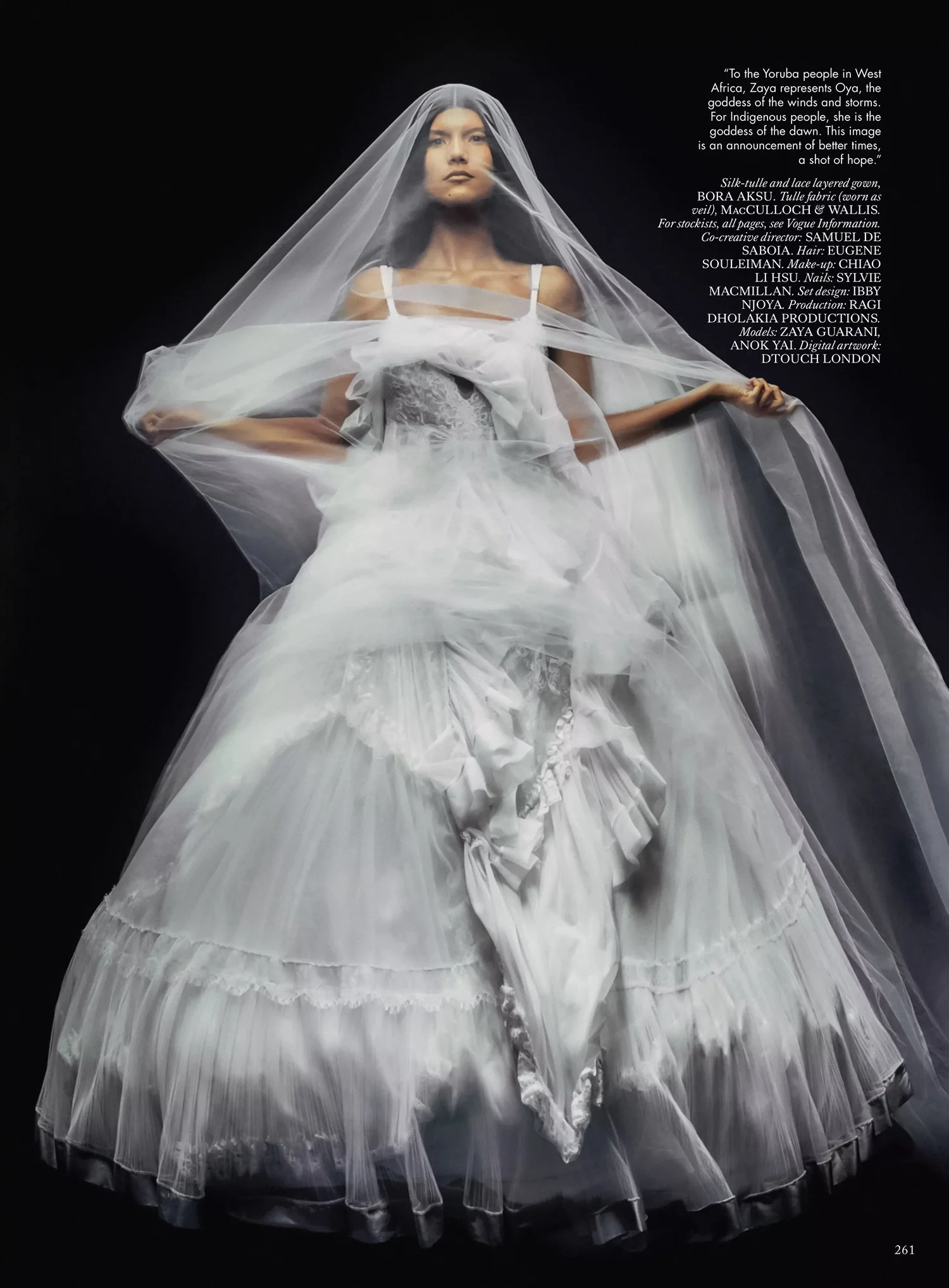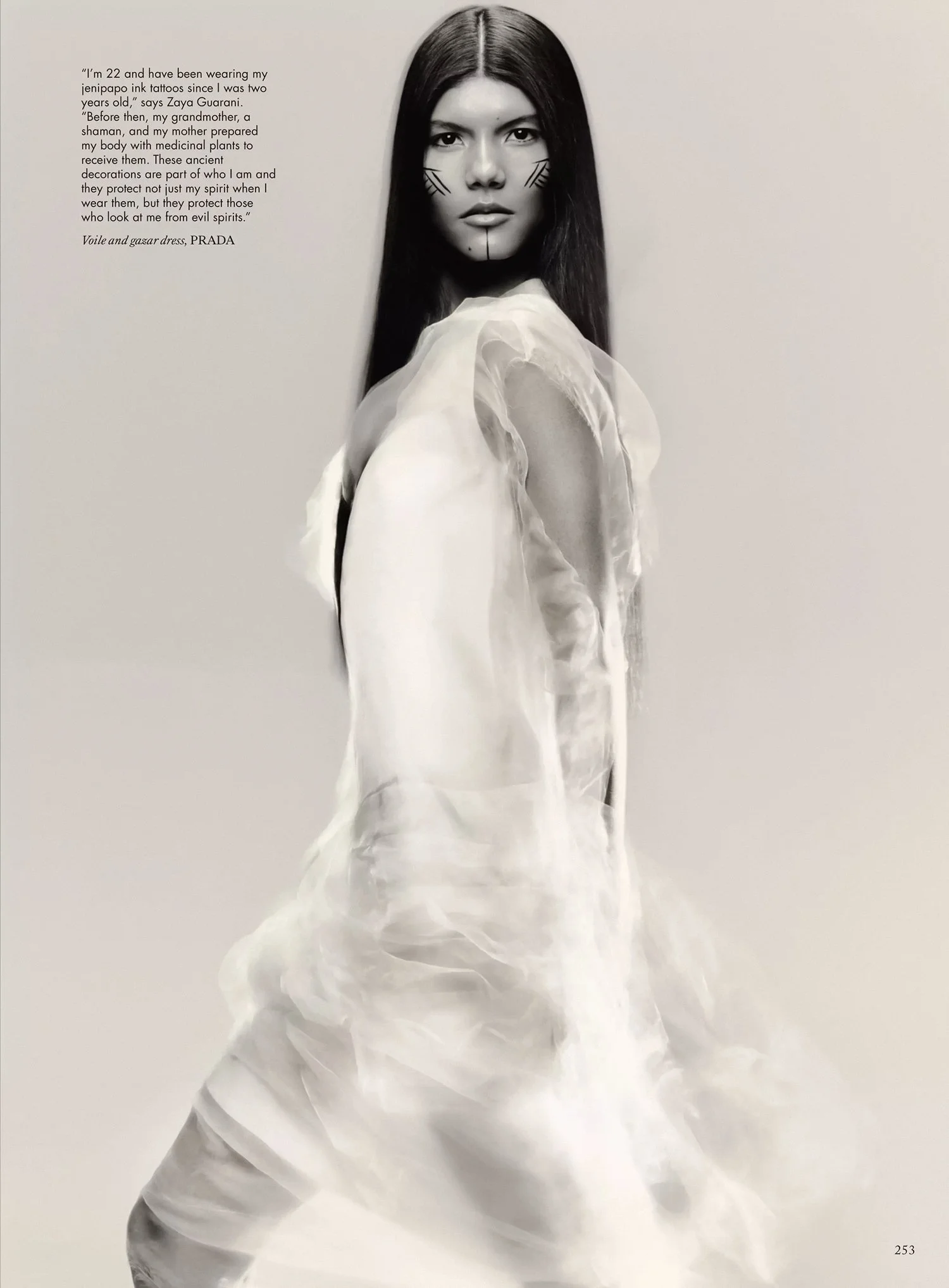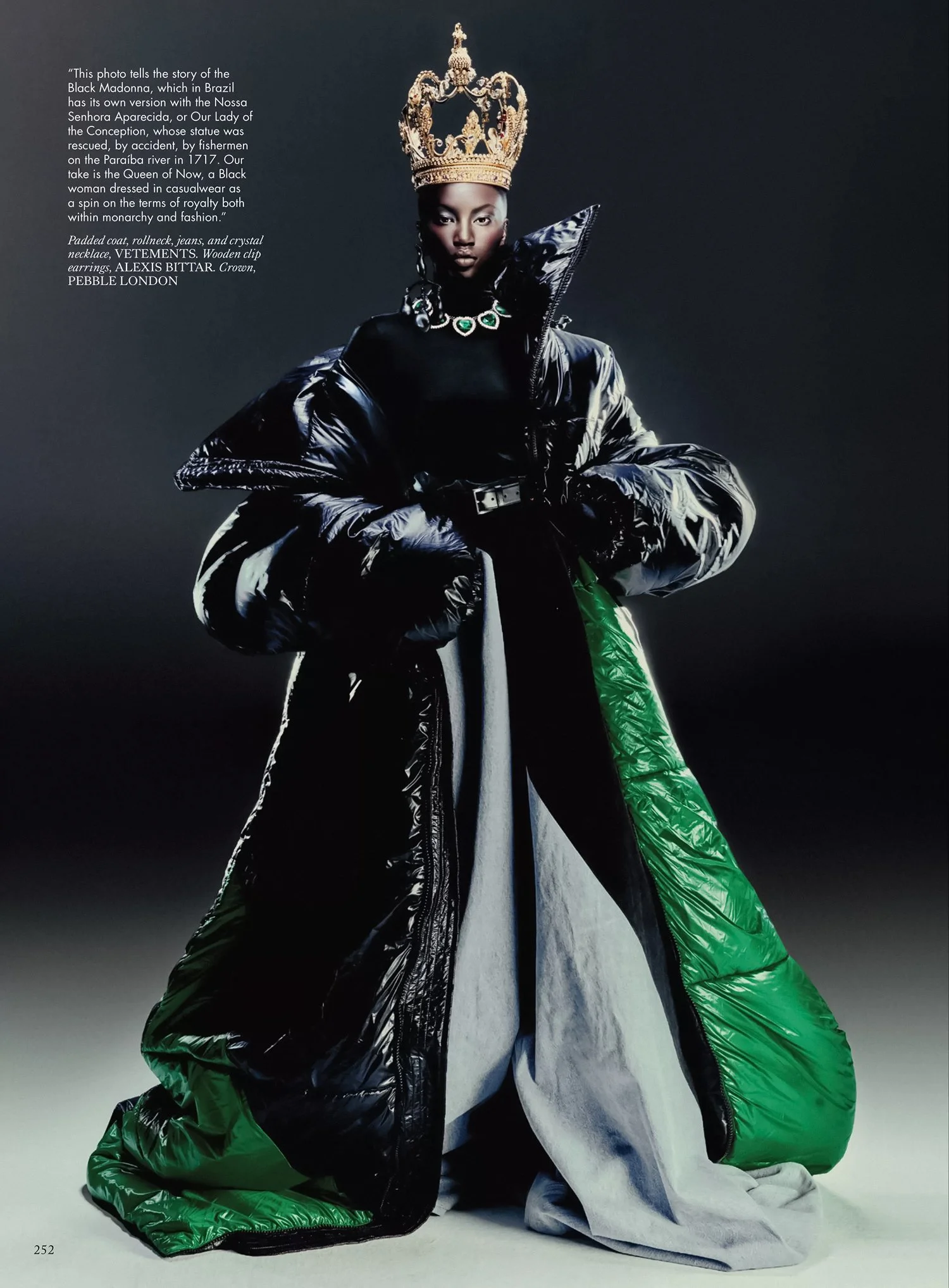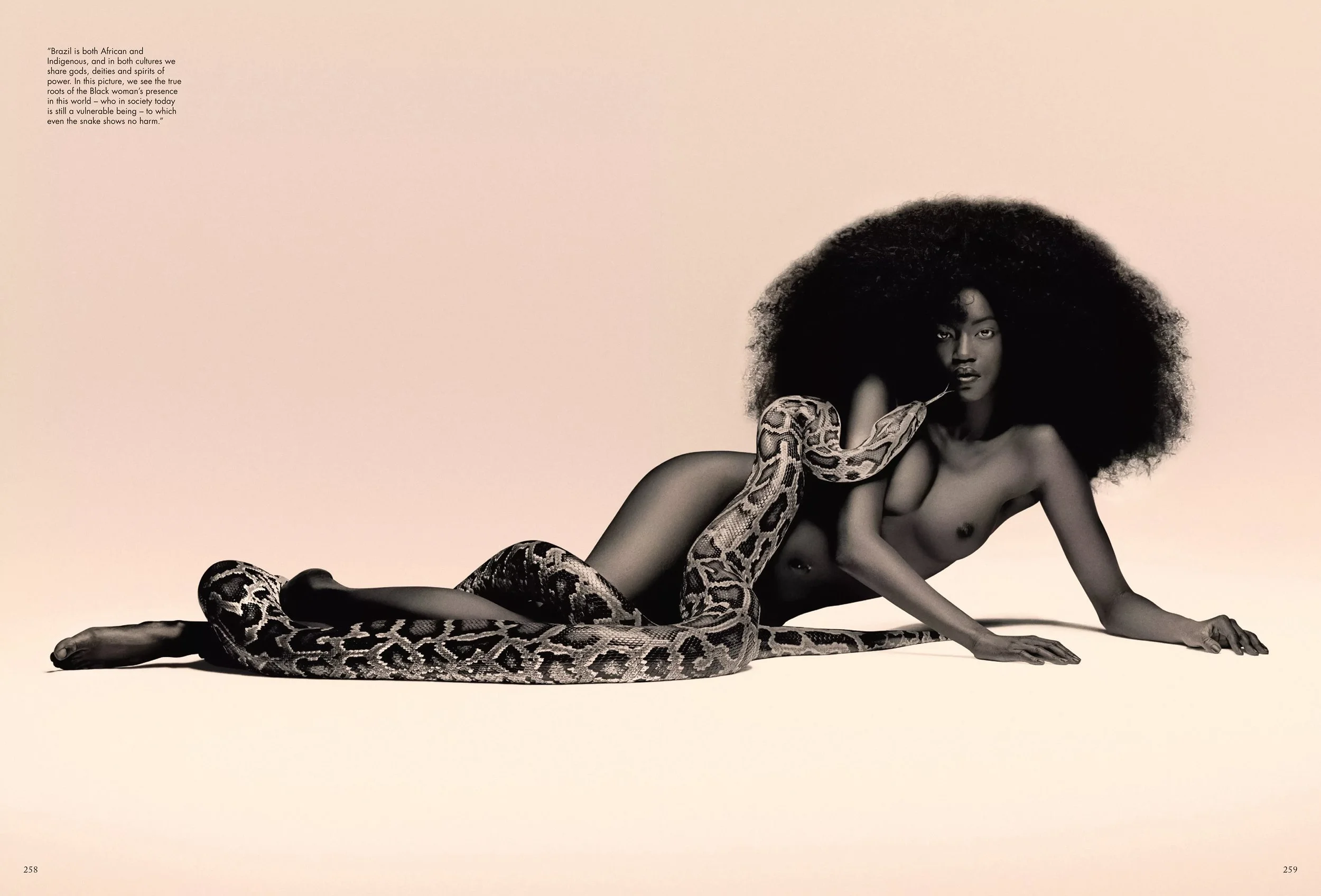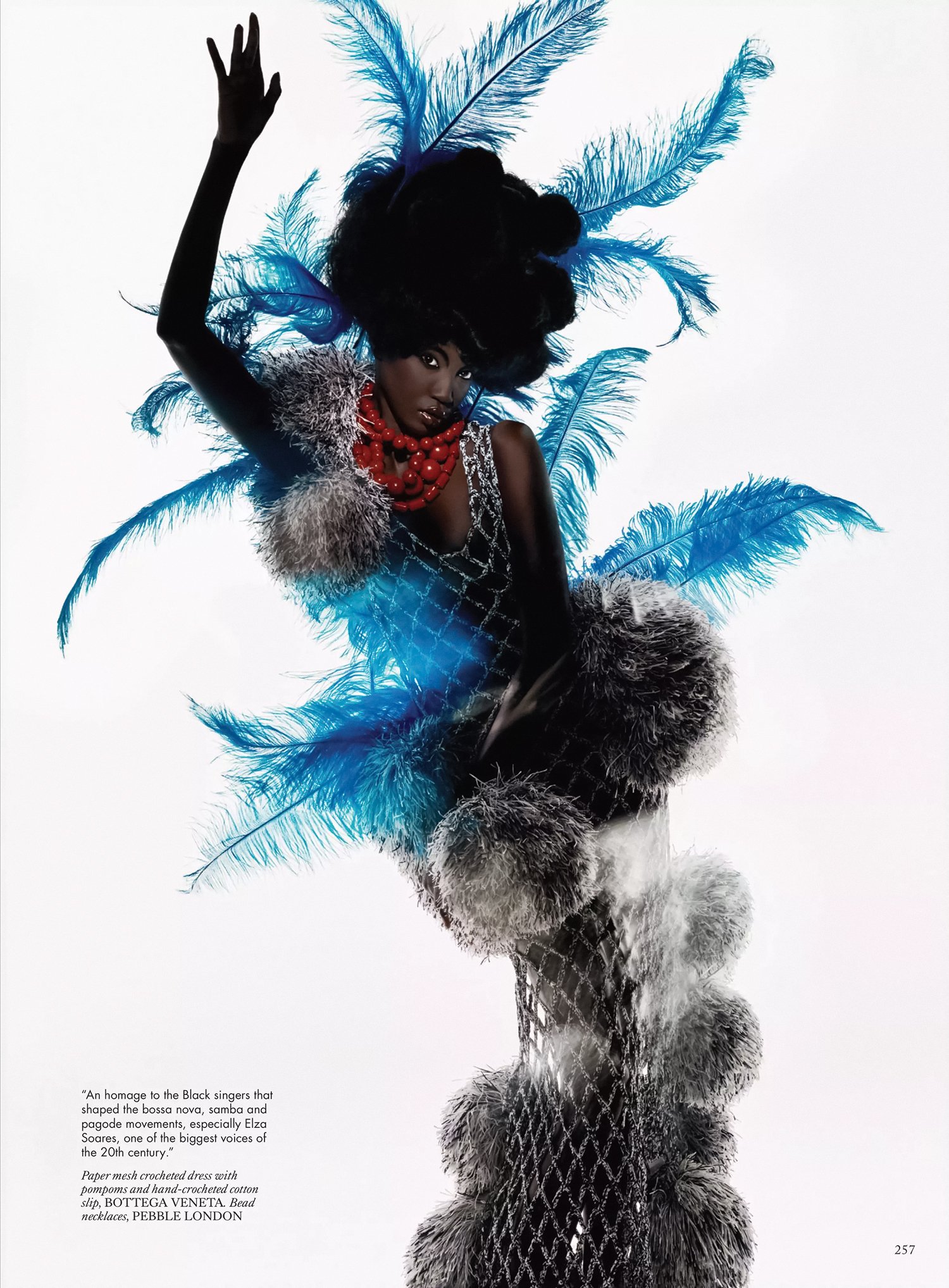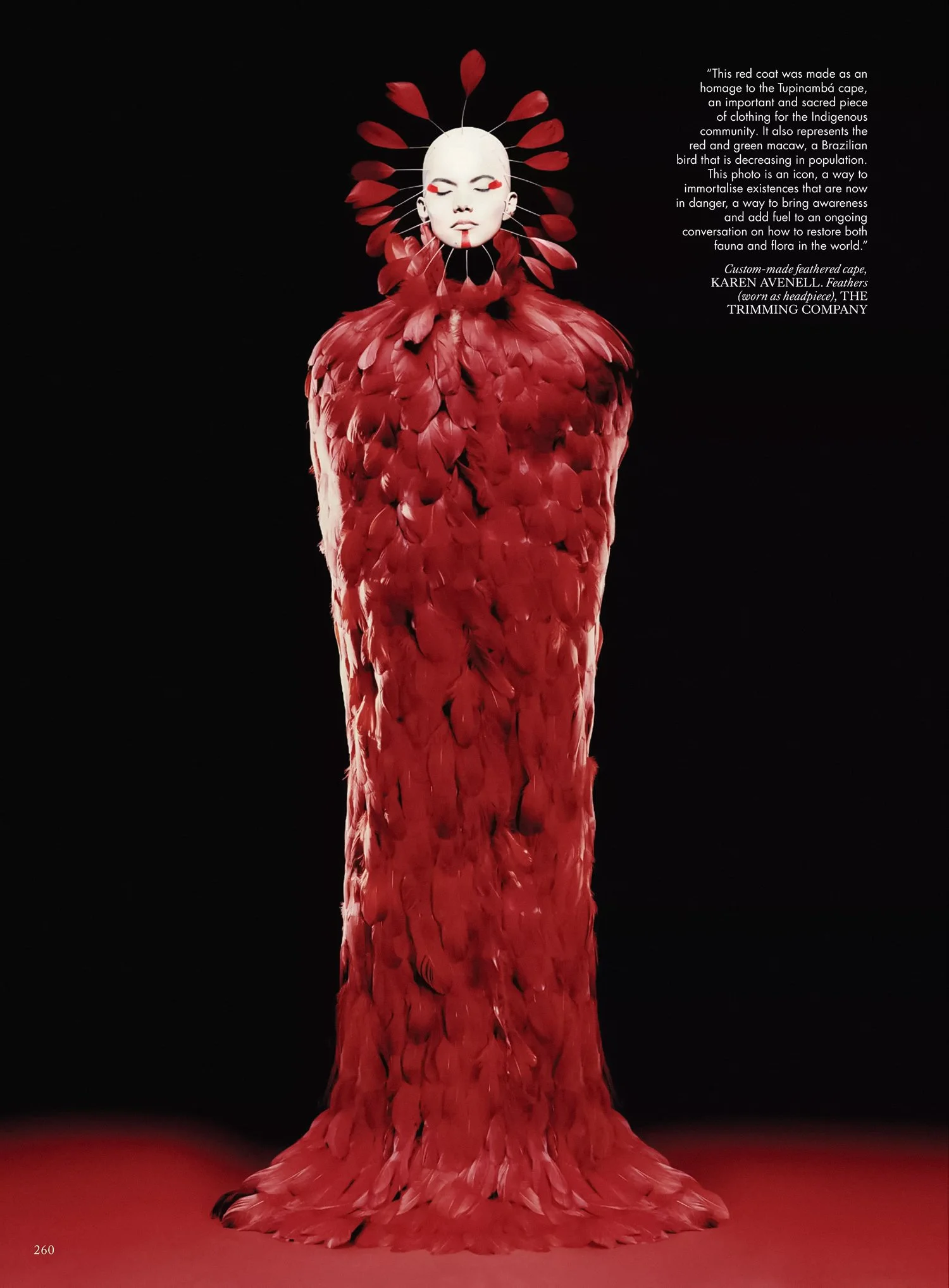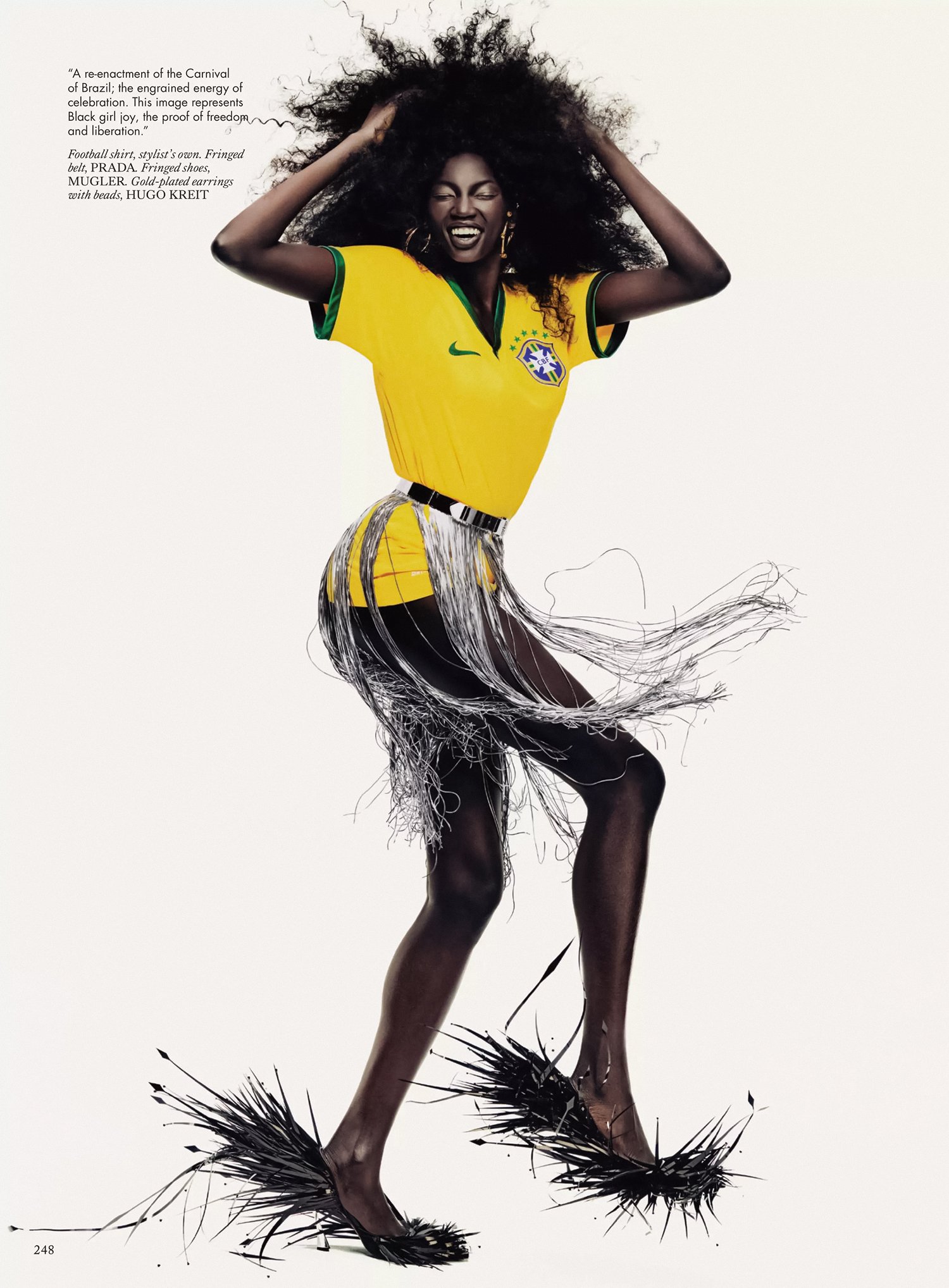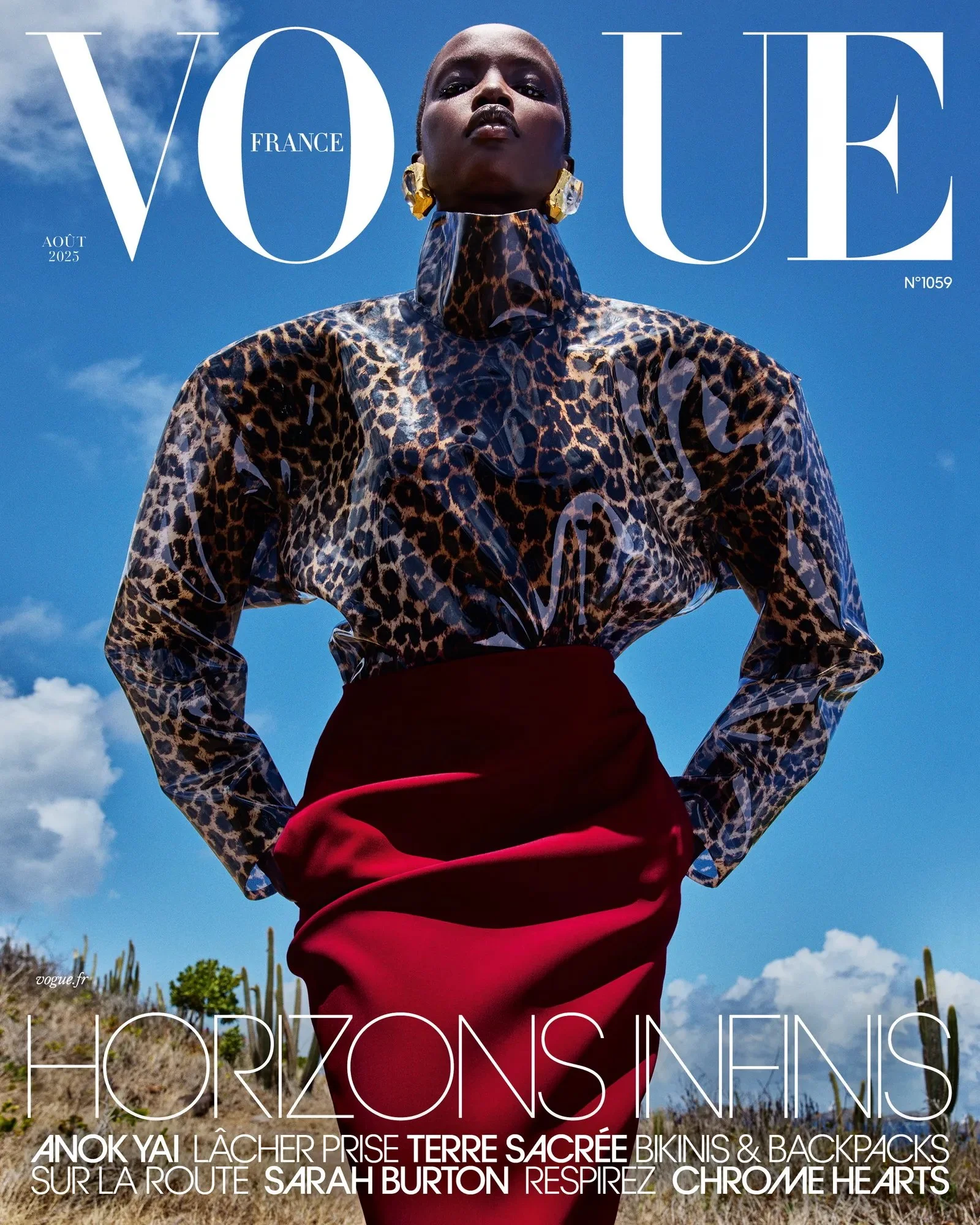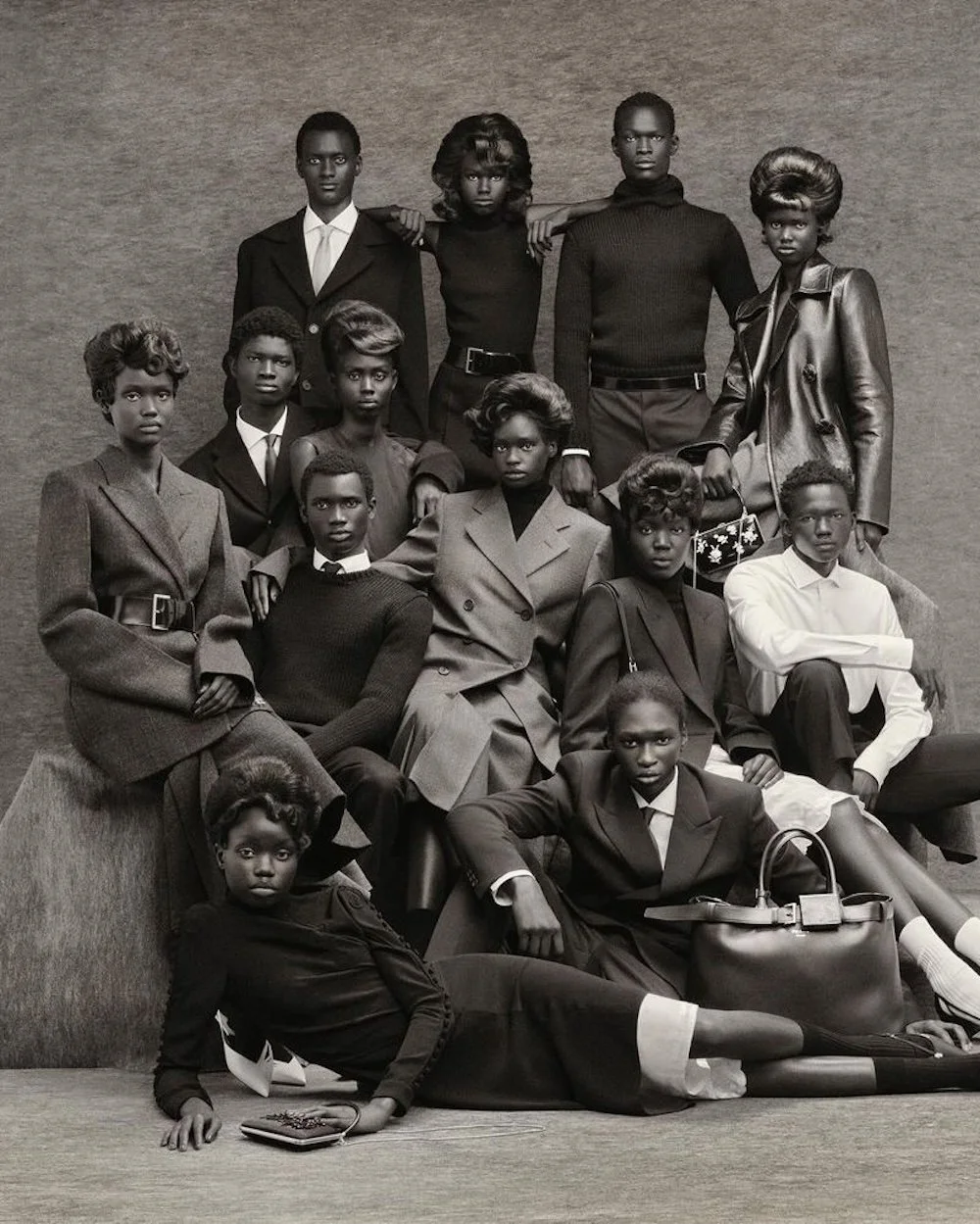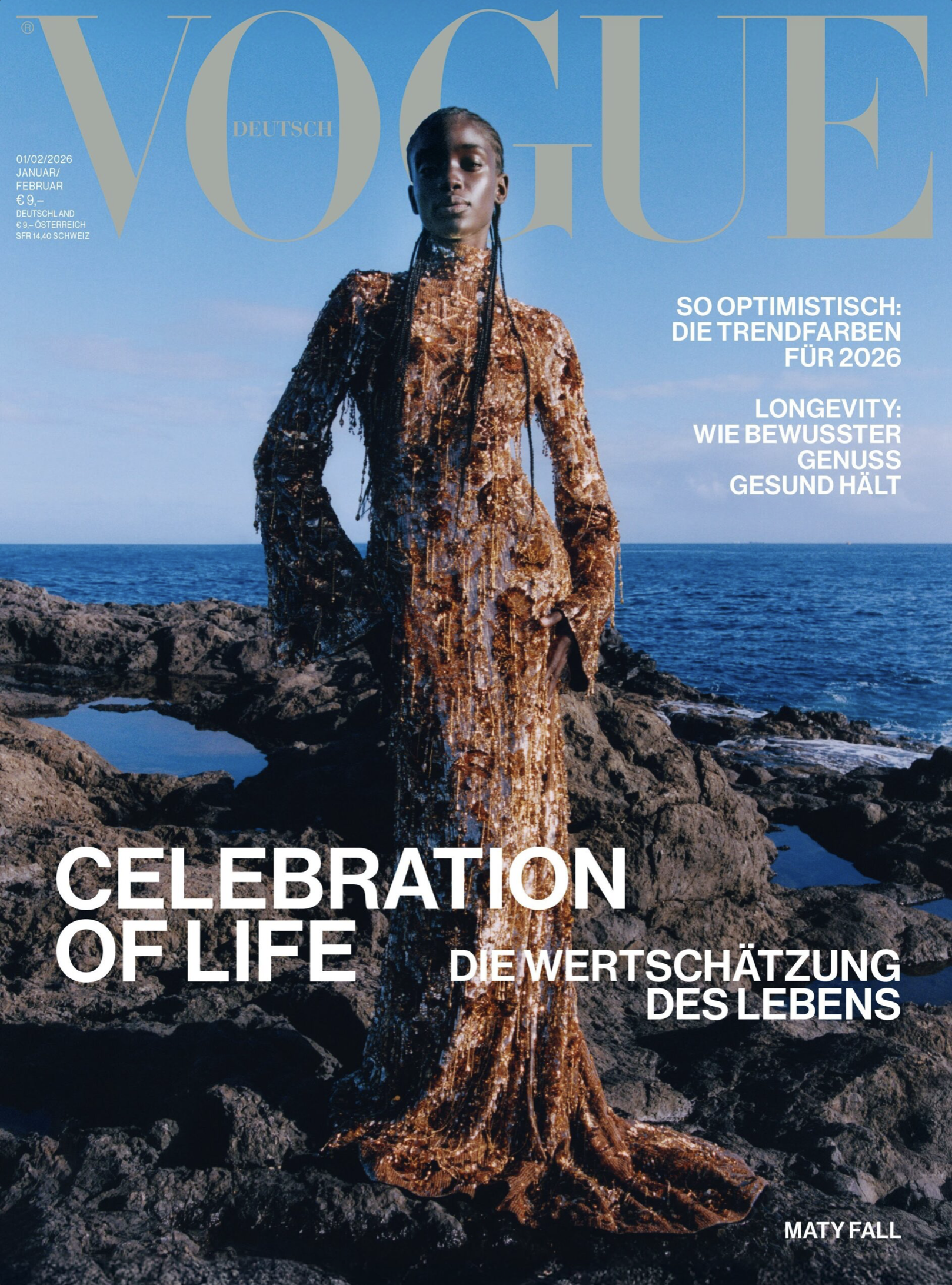Anok Yai and Zaya Guarani in 'An Altar to Memory' by Rafael Pavarotti for Vogue UK March 2024
/Models Anok Yai and Zaya Guarani grace the pages of the March 2024 issue of British Vogue [IG]. Kate Phlean styles ‘An Altar to Memory’, lensed by Rafael Pavarotti [IG]. / Hair by Eugene Souleiman; makeup by Chiao Li Hsu
Top model/supermodel Anok Yai’s [AOC archives] history of discovery at a 2017 homecoming weekend event at Howard University in Washington DC is well-documented on AOC. At lightening speed, Anok Yai was on the Prada runway in February 2018 and has never looked back.
We know less about indigenous Brazilian model Zaya Guarani, a member of the Kamurape and Guarani Mbya ethnicities. Her home is in Brazil’s Porto Velho, the capital city of Rondônia, located near the Madeira River in the Amazon. Guarani’s mission is to use her platform to highlight the deforestation of the Amazon fainforest in Brazil, and it’s important that AOC acknowledge this mission.
The skirt worn by Guarani in her image above is made of oca, consumed as a food staple but also used as a building material. AOC’s Lulu is on the AI search and the story of oca is rolling in. There’s such a wealth of information in this fashion story, that it’s truly inspiring as an educational reference.
The British Vogue text for the above image “To the Yoruba people in West Africa, Zaya [our Brazilian model] represents Oya, the goddess of the winds and storms. For Indigenous peoples, she is the goddess of the dawn. This image is an announcement of better times, a shot of hope.”
Anne knows Oya well, due to a previously-discussed on AOC experience with a FB personal friend of mine, who is Brazilian.
I would never be so stupid as to go on social media and describe myself as a daughter of Oya, although that is exactly the description given to me by the female religious leader in Brazil.
Talk about cultural appropriation! I might need police protection for the second time in my life. The first was over my support for abortion rights.
I sent Lulu out for a quick summary of Oya, and we share one paragraph of her response, as AOC prepares a much more in-depth look at Oya.
Oya is a powerful goddess in West African Yoruba mythology. She is associated with transformation, winds, storms, and the gates of the cemetery, and is often depicted as a fierce warrior woman wielding a sword. Oya is seen as a force of change and renewal, as she is believed to have the power to create and destroy. She is also considered a protective deity, especially for women, and is often called upon for assistance during childbirth and fertility rituals.
I’ve always said that Raphael Pavarotti and I are traveling on the same moonbeam.
My entire being is encapsulated in that FB banner, including an extraordinary relationship with the original, almost colonial-like home to Dapper Museum in Paris [both original museum and modern new museum are now closed]. The left-hand images in the banner reference two of my three visits. The right-hand statue of Oya is located in Catacumba Park in Rio de Janeiro.
Ironically a couple weeks ago, I returned to FB with this banner — that I’m looking for Oyadeas. Clearly I’ve found one in Zaya Guarani. To all our Brazilian and Peruvian friends, I’m also looking for historical stories about the Malagasy diaspora in those two countries specifically.
If you have historical or creative thoughts on this subject, you can reach me here. ~ Anne
